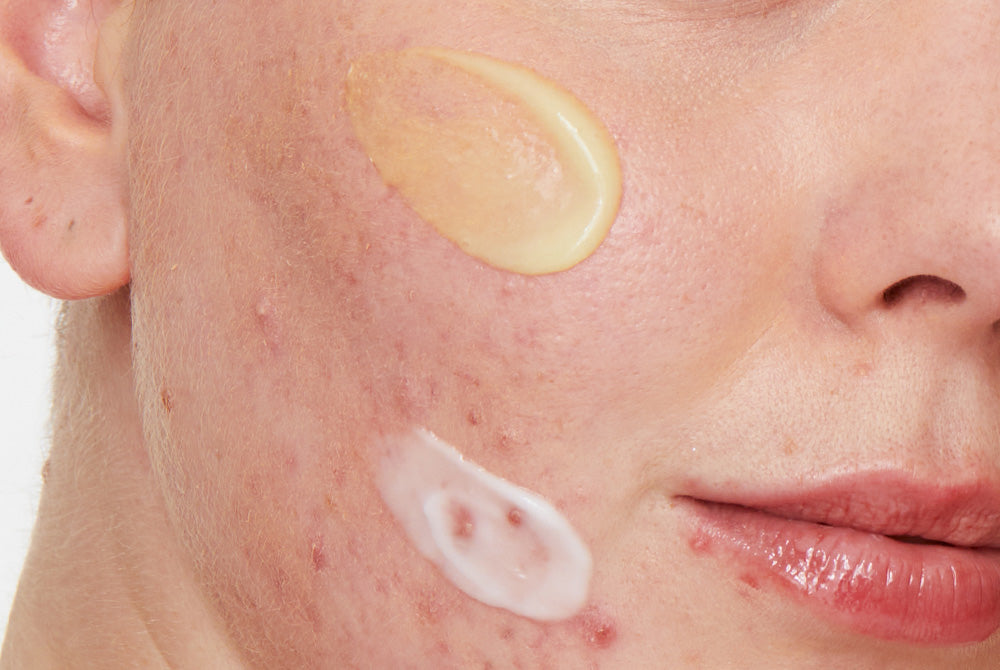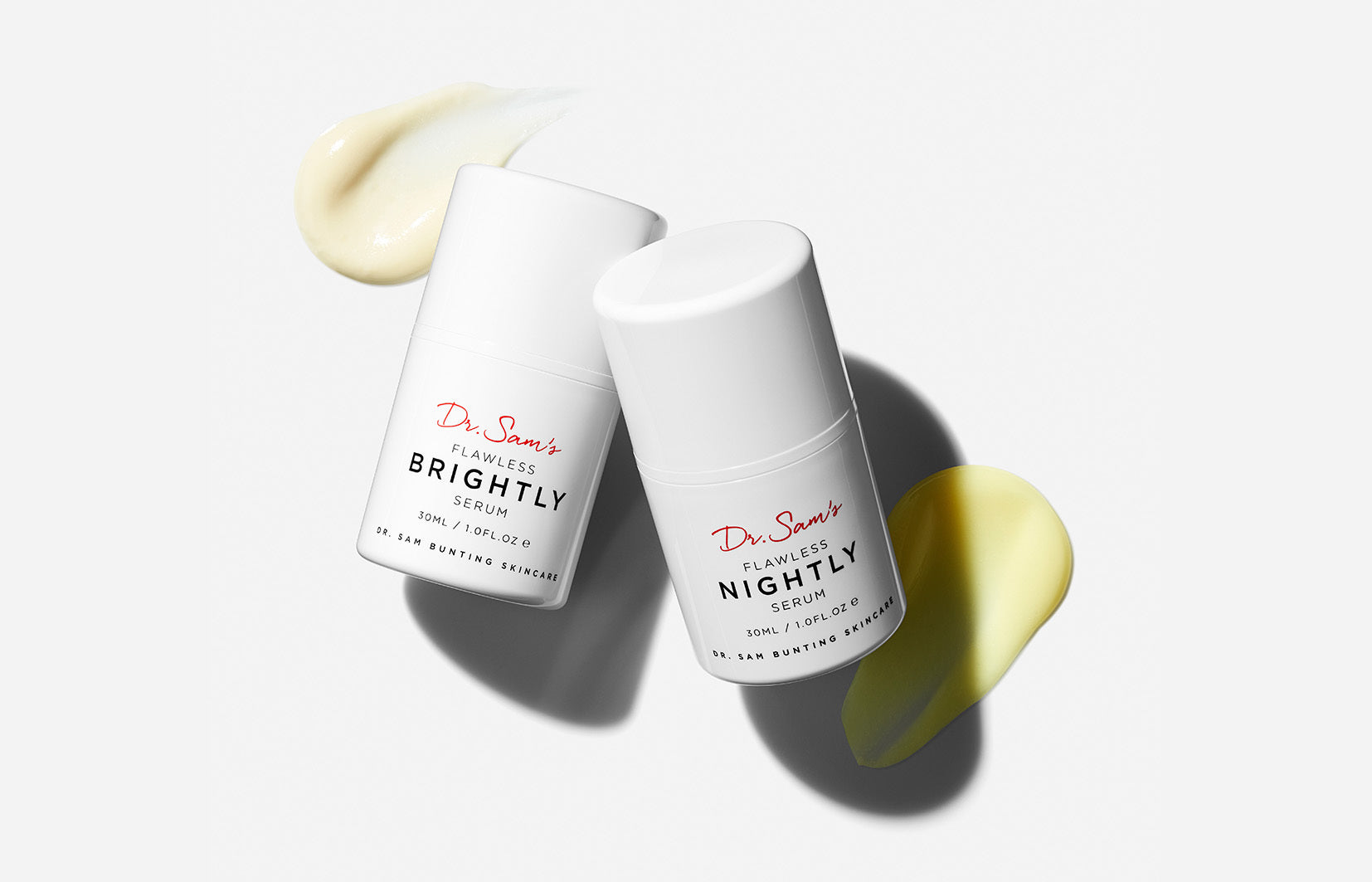Now, I'm sorry if this is one of your favourite hobbies and I do understand the enticing nature of newness; the allure of your favourite influencers’ latest finds. But if you’re experiencing skin sensitivity I would urge you, first and foremost, to look to your bathroom shelf to decide whether or not you are pushing your skin too far.
So you’ve heard lots of chatter about the skin barrier….barrier function….. barrier dysfunction and even disruption - so what on earth are we actually talking about?
What Causes Barrier Disruption?
The outermost layer of our skin is called the epidermis and the outermost bit of that is called the stratum corneum. It's a complex layer of differentiated, dead skin cells which have this amazing ability to form this waterproof, protective layer; it also generates something called the acid mantle, a clever film which bestows upon the skin a slightly acidic pH of around 5.5 which allows it to play host to “friendly” organisms, creating our microbiome - this assists with good skin health. And that's what a healthy barrier should be.
So what happens when the barrier is disrupted? Well, essentially that smooth protective layer and its associated acid mantle become disrupted. Imagine it's developed cracks. Like shoes which have been left out in the sun for too long and the leather starts to crack, allowing things that you then put on the leather to seep in.
The same thing happens with our skin. So personal skincare products, which on normal, healthy intact skin would be perfectly fine can now start to get into places where they're not supposed to - this stimulates nerve endings which become unhappy, releasing a torrent of inflammatory mediators; and the same thing happens to our immune cells. They become triggered and stimulated, again contributing to the inflammatory cascade, which leads to changes that we associate with skin sensitivity.
Common findings you might experience include reddening of the skin, there may be dry, flaky patches, but mainly, it's about how the skin feels.
Stingy, burn-y, tight, itchy - it really is all about feelings. And there are those individuals who are acne-prone who will also find themselves breaking out, because that’s their skin’s stress response.
Too Many Skincare Products?
So now's the time to look in that big bag of products. I think that when it comes to building a sensible routine for skin that's behaving sensitively, we always have to look at cleansing. If you get cleansing wrong, it's hard to get skincare right.
And certainly amongst the patients that I see, elaborate cleansing rituals are often the culprit underpinning so much of what is going wrong with their skincare routines. Foaming cleansers in particular which may disturb the acid mantle because they're often associated with an alkaline pH status will tend to cause problems. Solution? Go low foam, low pH and your skin will thank you for it. And remember that skin pH starts to creep up and become more alkaline as we age so it's an even more important consideration as we get older.
The next thing to think about is rationalising your leave-on products and I'm thinking specifically of the active products. No one needs a Korean 10-step routine in my opinion and this is especially true if you're experiencing sensitivity. Too many people are using too many different actives in rotation; or changing them up on a whim because it seems fun - but this is kryptonite for skin that's behaving sensitively. You will gain far more confidence in your routine if you implement one active ingredient at a time. Build it in slowly and steadily, looking for improvement over blocks of skin cycles, reassessing skin and its response every six to 12 weeks time, before even thinking about adding in a second or a third active ingredient.
Retinoids and AHAs
I think it's worth a special mention of individuals using both retinoids and AHAs. So many people have asked: how do I build Nightly Serum into my routine if I'm using a retinoid and applying an AHA in the morning? In individuals who are experiencing sensitivity in that context, I always recommend stopping the AHA and giving the retinoid your single minded focus for at least three months. THEN, make a calculated decision about whether or not you actually need the AHA simply because they can both stack up in terms of their effect on the skin’s outer layer to really increase the potential for sensitivity if not used correctly. So titrate your retinoid alone, quantify what benefits you're getting - you may well not need the AHA at all.
Then we come on to the hydration step and in sensitive skin I think it's really important to choose your moisturiser with care. Choose a product that hasn't got too many ingredients - a simple formula will work best. Then look for soothing ingredients like aloe vera, bisabolol, green tea and allantoin which will help reduce the tendency for your skin to be fiery and flaming and irritable. And avoid any potential irritants - so skip moisturiser that contains fragrance. In the context of skin sensitivity and barrier disruption, fragrance is not your friend.
Mineral Sunscreens for Sensitivity
The final consideration is sunscreen, which is important in context of sensitivity. I would urge you to think about mineral sunscreen containing zinc oxide and titanium dioxide if you’ve had SPF issues in the past. These are better tolerated in context of skin sensitivity, where chemical filters can sometimes cause issues.
There’s a lot to think about when it comes to building a skincare routine for sensitive skin - I've used these key principles in building The Dr Sam System Routine Finder for sensitive skin so I hope that helps you start to incorporate carefully combined actives in a safe but cautious way into your skincare routine. I will do a separate post on products I like for those who are experiencing skin sensitivity or who've perhaps had a reaction to a skincare product and just want to go back to Ground Zero to heal their barrier and to start again afresh. Hope this helps build your skin confidence!!!























